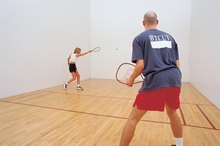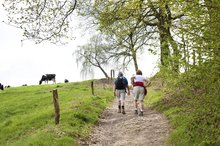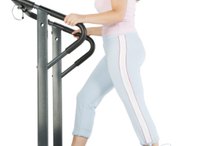What does fact checked mean?
At Healthfully, we strive to deliver objective content that is accurate and up-to-date. Our team periodically reviews articles in order to ensure content quality. The sources cited below consist of evidence from peer-reviewed journals, prominent medical organizations, academic associations, and government data.
The information contained on this site is for informational purposes only, and should not be used as a substitute for the advice of a professional health care provider. Please check with the appropriate physician regarding health questions and concerns. Although we strive to deliver accurate and up-to-date information, no guarantee to that effect is made.
Calories Burned During "Sweating to the Oldies"
Fitness aficionado Richard Simmons says his "Sweatin' to the Oldie's" workout will get your "heart-pumpin' " and "fat burnin'." The 55-minute dance-aerobic workout can be performed at a pace you are comfortably with, Simmons says. The faster you move, the more calories you will burn. Exercising to songs such as "Hit the Road Jack" and "Ain't to Proud to Beg" may inspire you to build and maintain a swift pace.
Calories and Pacing
Calories burned during "Sweatin' to the Oldies" will vary depending on your body size and workout pace. For example, a 125-pound person dancing at a fast clip would burn about 420 calories an hour, while a 185-pound person would burn 622 at the same intensity and length of time, according to Harvard Health Publications 1. Low-impact or slower-pace dancing would use 410 calories an hour in someone weighing 155 pounds but only 330 calories in a125-pound person.
Recommendations
Calories Burned Biking 15 MPH
Learn More
Wear shoes that are well-cushioned with soles that permit easy twisting and turning before you hit the "dance floor." Proper cushioning will absorb shock and pressure for the impact sustained during aerobic dancing. Shoes should be in good shape but broken in. Airing out shoes after a workout will lower the risk of developing athlete's foot and other skin conditions.
- Wear shoes that are well-cushioned with soles that permit easy twisting and turning before you hit the "dance floor."
- Proper cushioning will absorb shock and pressure for the impact sustained during aerobic dancing.
Additional Tips
Following a few tips as you sweat to the oldies can make your calorie-burning efforts more enjoyable and help sustain your energy. Keep a water bottle handy as you dance and drink plenty of fluids before after your workout. Warm up by stretching your body and walking in place for five or 10 minutes before you begin.
Considerations
How Many Calories Do You Burn While Jogging 4.5 MPH?
Learn More
Aerobic exercises such as dancing can help build strength and stamina while lowering your risk of heart disease, stroke and certain cancers. High-impact dance aerobics should be performed no more often than every other day and less frequently if you are overweight, out-of-shape or elderly, according to the University of Maryland Medical Center. Talk to your doctor before beginning a new exercise program, particularly if you have high blood pressure, diabetes or heart problems.
Related Articles
References
Writer Bio
Karen Hellesvig-Gaskell is a broadcast journalist who began writing professionally in 1980. Her writing focuses on parenting and health, and has appeared in “Spirituality & Health Magazine" and “Essential Wellness.” Hellesvig-Gaskell has worked with autistic children at the Fraser School in Minneapolis and as a child care assistant for toddlers and preschoolers at the International School of Minnesota, Eden Prairie.








